Over the last few years, I’ve written several blogs about the ATONA Faraday detector technology that we use here at Isotopx. If you don’t already know about ATONA then this link should help. In an earlier blog I discussed the potential for adding ATONA to other types of analytical instruments, and I’ve also blogged about the history of ATONA and how it got developed. But I still get asked quite a lot of questions about ATONA and its capabilities, so I thought it was time for a quick “Q and A” blog to answer some of the more commonly asked questions.
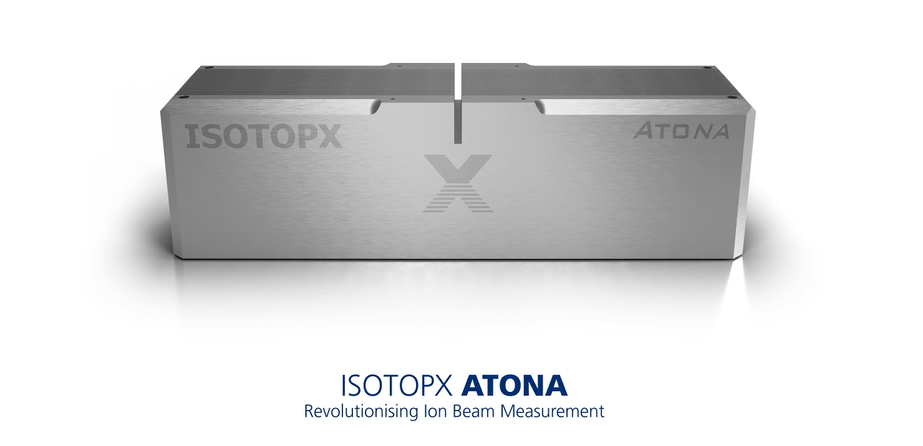
Q1: Does ATONA require special Faraday detectors in order to operate?
No, it doesn’t. The technology contained in ATONA is all in the amplification circuit, not the Faraday detectors themselves. We still use the same Faraday detectors that we’ve used at Isotopx since the company was started. Our Faraday detectors are extremely hardy and very few have ever been replaced, even if we include the legacy systems from the GV Instruments days. In fact, we guarantee our Faraday detectors on our TIMS, NGX and IRMS instruments for at least ten years, and warranty claims are vanishingly rare.
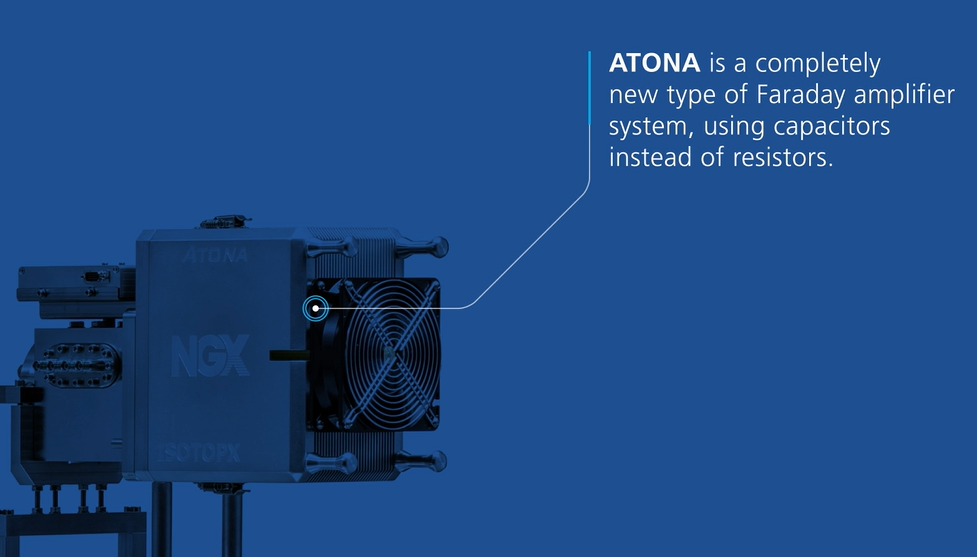
Q2: Is the ATONA amplifier system difficult to set up?
Absolutely not! One of the most tangible benefits of the ATONA system is that it requires no setup. If you’ve used mass spectrometers equipped with Faraday detectors then you can use ATONA, the amplification system is essentially invisible to the user. Even better, for many isotope ratio applications, the ATONA system negates the need to switch over to ion counting detectors for very low abundance isotopes or very small ion beams, meaning that setting up an analytical method is even easier.
Q3: Does ATONA require any amplifier switching to achieve the huge dynamic range?
No, it doesn’t. This is one of the benefits of ATONA that’s hardest to get to grips with, as it’s such a big change from “traditional” resistor-based Faraday amplifier systems. In one of the “traditional” systems, you choose the gain of your amplifier according to the size of the ion beam you’ll measure. This adds a degree of complexity to method setup and offers plenty of scope for putting the wrong ion beam into a sensitive detector and saturating it, causing delays.
With ATONA that simply doesn’t happen. The ATONA amplifier system can handle really large ion beams (1,000 volts or more) with no detrimental effects and no saturation delay. And when you want to measure a tiny beam (think sub-millivolts) on the same Faraday detector, the 1,000-volt beam decays to background count rates in a fraction of a second. There really is nothing else quite like it.
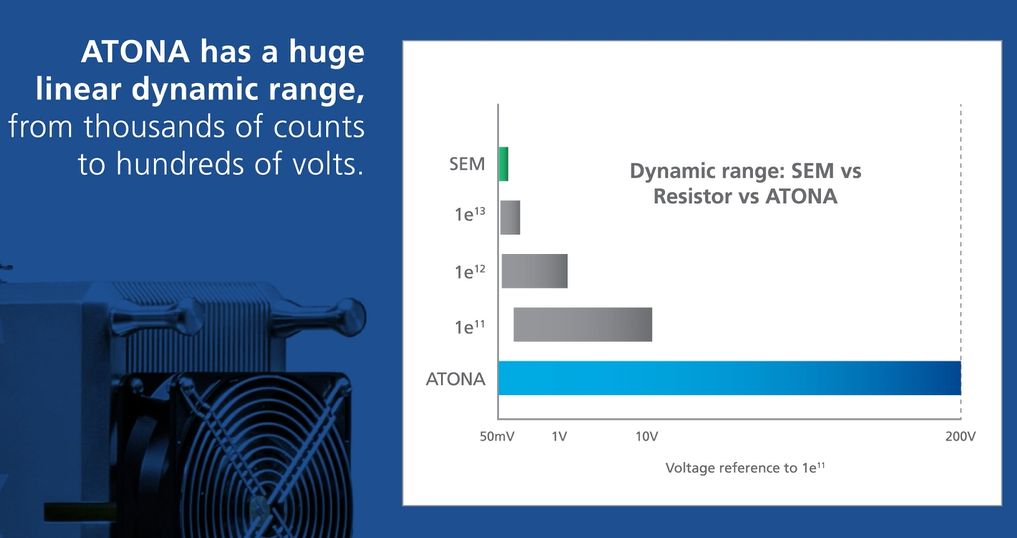
Q4: Does ATONA require specialized environmental conditions to achieve its performance?
It doesn’t. The ATONA electronics boards containing the capacitor networks are temperature and pressure controlled, as they often are with resistor-based Faraday amplifiers. But that’s it, there is no need for a special laboratory environment in order to use the ATONA system.
Q5: Do you have to be careful with large ion beams when using the ATONA system?
Absolutely not! As mentioned in question 3 above, ATONA can handle huge ion beams without causing the Tau decay issues that are well documented for higher gain resistor-based Faraday amplifier systems (such as those using 1e13 Ohm resistors). With the ATONA system, you can scan across the whole mass range without fear of saturating any of the Faraday detectors. This could be particularly useful for applications where the intensity of an ion beam may vary rapidly (see also question 8 below)
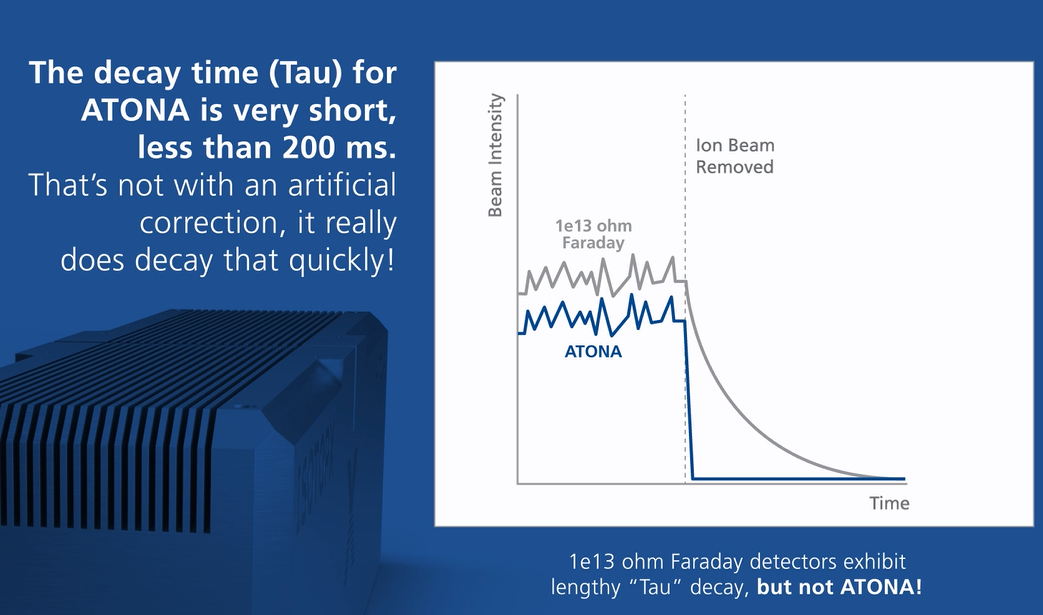
Q6: Does the ATONA system require more regular calibrations to achieve low noise levels?
Again, absolutely not! Baseline noise levels for ATONA-based detectors are significantly lower than those of resistor-based detectors. And even better, the stability of the baseline noise is excellent over significant periods of time. The detector gain calibration is equally stable, again over long periods of time. The baseline and gain stability performance of ATONA means that detector calibrations are required less frequently. Typically, users of our instruments equipped with ATONA systems perform far fewer baseline noise and gain stability measurements, meaning more time is devoted to taking measurements.
This benefit is doubly so when compared to resistor-based Faraday amplifier systems with high gain resistors. The 1e13 Ohm resistor-based systems can take a long time to make a baseline measurement due to the necessity to use a very small calibration voltage. The ATONA system is not limited in this way, so that running gain calibrations (when needed!) is much quicker.
Q7: Is ATONA available on all Isotopx products?
Yes! The current range of products at Isotopx is the Phoenix TIMS, the NGX noble gas MS and the SIRIX stable isotope ratio MS. All are equipped with ATONA as standard. Our intention is that all future products will be similarly equipped.
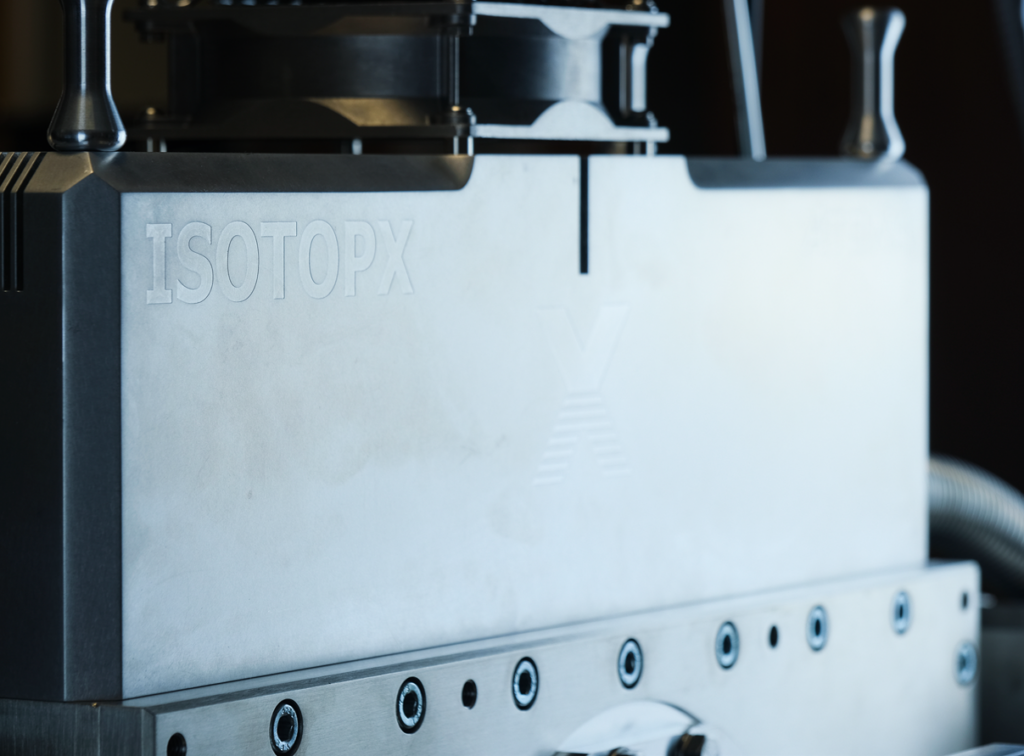
Q8: Would ATONA work with MC-ICP-MS for in-situ analysis?
Ah yes, the MC-ICP-MS question. This was discussed in an earlier blog, and I did say I would return to it. I am still regularly asked about whether Isotopx will put the ATONA system on an MC-ICP-MS, and I can certainly confirm that if we do bring such a product to market, we’ll equip it with ATONA. I feel that MC-ICP-MS has the potential to benefit from ATONA to an even greater degree than our existing products.
This is because in-situ, spatially resolved analyses, such as laser ablation of solid geological samples, can produce ion beams that very rapidly change in intensity, potentially over many orders of magnitude. This matches very well with the capabilities offered by ATONA, in terms of the wide dynamic range and the rapid Tau decay. ATONA has been tested with the shorter integration times typically adopted for LA-MC-ICP-MS and it works extremely well. Could MC-ICP-MS be the best application of ATONA? Let’s see!
Q9: Is the ATONA system reliable?
Another good question. So far, ATONA has proved to be very reliable, with few failure points identified. There are now multiple labs that have been successfully using this technology for several years and the majority of them have experienced no issues with their ATONA system.
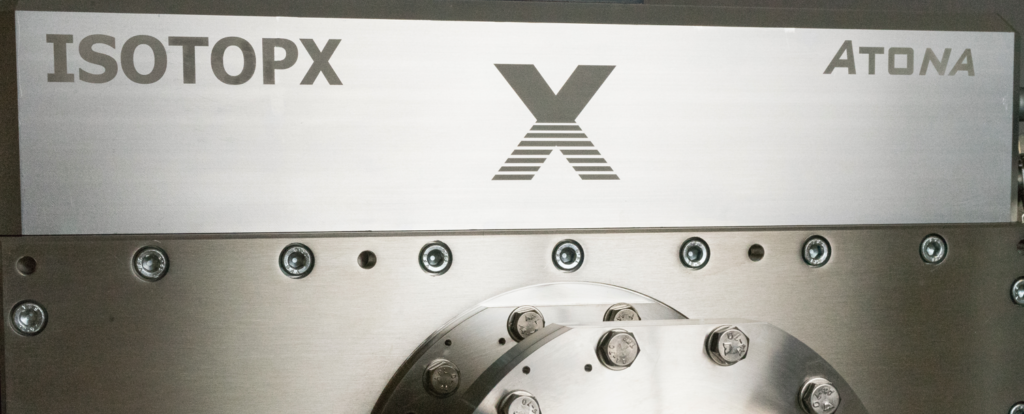
OK that’s all for this blog. If you have any further questions about ATONA, please let me know, and I’ll get back to you as soon as I can. As always, please send me your thoughts and comments, direct to (Stephen.guilfoyle@isotopx.com). More next time!
